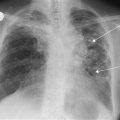Muscle Weakness and Wasting
Muscle weakness and wasting may be caused by a variety of conditions both systemic and those confined to muscles. Subjective weakness is common and may not indicate significant illness.
History
Onset
Muscle weakness and wasting in childhood is often due to congenital disease such as inherited muscular dystrophies (e.g. Duchenne’s muscular dystrophy), a diagnosis further supported by a positive family history of a first-degree relative with similar problems. With myotonic dystrophy, first symptoms occur around the age of 15–30 years, while with motor neurone disease, the peak age of onset is in the 50 s.
Site
The distribution of muscle wasting may characterise the disease. Atrophy may be confined to the motor supply of a single nerve, such as the thenar eminence with the median nerve affected by carpal tunnel syndrome. It may also occur with a group of muscles such as the leg, with polio. The distribution may be generalised in conditions such as motor neurone disease. Distal weakness ascending to involve proximal muscles is characteristic of Guillain–Barré syndrome.
Precipitating factors
Precipitating factors such as trauma may result in transection of a peripheral nerve such as the ulnar nerve, commonly at the wrist.
Past medical history
The presence of carcinoma or chronic cardiorespiratory disease may give rise to peripheral muscle wasting from cachexia. Previous infection with polio is significant because, in a minority of affected individuals, degeneration of anterior horn cells with subsequent paralysis and muscle wasting occurs (post-polio syndrome). Disuse atrophy can be localised or generalised. Conditions that result in immobility such as a long-bone fracture will cause disuse atrophy of the surrounding muscles; this is commonly seen upon removal of plaster casts. Localised disuse atrophy may also result from joint pains such as quadriceps wasting with painful knee disorders. Prolonged immobility will result in generalised muscle wasting. Conditions such as diabetes and renal failure are associated with neuropathy. Poor diet and lack of sun exposure may lead to vitamin D deficiency.
Associated symptoms
Most of the causes are associated with weakness of the affected muscles. Diplopia, ptosis and fatiguability are associated features suggestive of myasthenia gravis. Motor neurone disease may present with progressive weakness and wasting of the hand or leg accompanied with dysarthria and dysphasia. Cushing’s disease may be associated with weight gain, hair growth, acne, abdominal striae, muscle weakness, back pain and depression.
Examination
Inspection will identify the areas of muscle wasting. Central obesity with limb wasting occurs with Cushing’s disease. Generalised uniform muscle wasting should lead to a careful examination of the organ systems for malignancy and organ failure. Muscle tenderness may occur with polymyositis.
Characteristic features of myotonic dystrophy are frontal balding, ptosis, temporal and facial muscle wasting. Cataracts may be seen with inspection of the eyes. Ptosis may also be a feature of myasthenia gravis; this is accompanied by diplopia, facial weakness and a weak nasal voice. Muscle wasting with fasciculations occurs with motor neurone disease, no sensory loss is experienced and mixed upper and lower motor neurone signs may be present.
Assessment of tone, reflexes and pattern of weakness will determine whether it is an upper or lower motor neurone lesion. Delayed relaxation of muscle contraction occurs with myotonic dystrophy and proximal muscle weakness occurs with Cushing’s disease. With localised muscle wasting, examination of each muscle will allow you to determine whether the lesion arises from a single nerve or a nerve root. Weakness, areflexia and sensory loss are seen with Guillain–Barré syndrome.
The joint surrounded by wasted muscles should be examined for deformity or pain that may restrict movement. Measurements of circumference can be obtained to assess asymmetrical muscle wasting of the limbs.
Proximal muscle weakness may be more evident than distal weakness in many of the conditions listed. Specific assessment for this, such as rising from a low chair or from a squatting position, is required.
General Investigations
■ FBC
Anaemia with nutritional disorders and chronic disease.
■ ESR and CRP
↑ with malignancy, polymyositis.
■ U&Es
↑ urea and ↑ creatinine with renal failure.
■ LFTs
↑ Albumin with malnutrition.
■ Creatine phosphokinase
↑ with myopathies.
■ TFTs
↓ TSH ↑ T4 with thyrotoxicosis.
■ Vitamin D
Low in osteomalacia.
■ EMG
Allows assessment for denervation of muscle, myopathies and myotonic dystrophy, motor neurone disease.
■ Nerve conduction studies
Radiculopathies, peripheral neuropathy, peripheral nerve compression, motor neurone disease.




